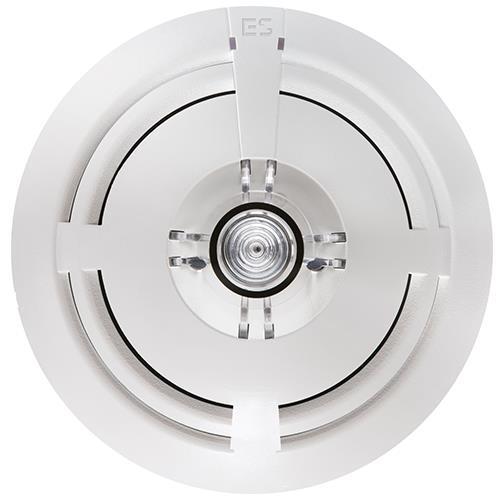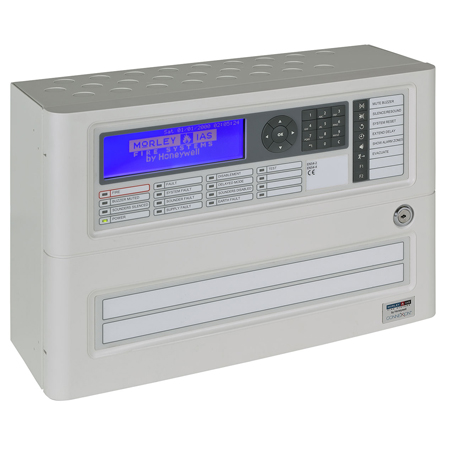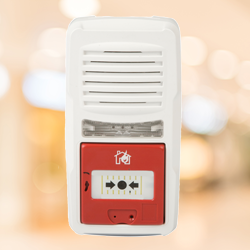Fire Alarm System Installation
Fire Alarm System Installation
The following responsibilities of the fire alarm installer are as follows:-
- To install a fire alarm system in accordance with the relevant standards i.e. BS5839
- To use the correct type of fire alarm cable
- To test the cables, continuity and earth, and to provide certificates
- To flag up any variations that effect the design
- To product a set of 'as-fitted' drawings
- To sign off a BS5839 G2 Installation Certificate
Types of cables and where to use them
There are two basic grades of fire alarm cable permitted for use on fire alarm systems. These are known as 'Standard' grade and 'Enhanced' grade designed to meet the standards BS 8434-1 and BS 8434-2 respectively.
The choice of cable needed is dependent on how long the cable is expected to continue to operate whilst a fire is occurring.
The integrity of the system is paramount and all interconnections between devices must be considered, especially those that affect the signal's critical path.
Firstly the British Standard insists that the mains supplies to the system, the manual call points and the automatic sensor circuits are wired in fire-resistant cables.
What cable? - Standard or Enhanced fire resistant cables?
The Standard fire resistant cable will satisfy most applications particularly 'one out, all out' fire plans. Enhanced fire resistant cables are required for applications that need communications to continue during a fire incident when the building fabric may be destroyed. Examples of where Enhanced fire resistant cable should be used include:-
- In Unsprinklered buildings where the 'Fire Plan' involves the evacuation of the occupants in four or more phases.
- In Unsprinklered buildings greater than 30 metres in height
- In Unsprinklered buildings or large network sites where a fire could affect the cables 'critical path', particularly where people will remain in occupation during a fire elsewhere on the site.
- Where in part, a delayed evacuation may exist and the critical signal path may pass through an area of high risk.
- Where a fire risk assessment has identified a particular need for enhanced cable.
Other aspects in regard to fire alarm system installation practice
- The electrical characteristics of the cable such as impedance, capacitance etc should be capable of handling the data and power of the system.
Cable requirements for fire alarm system installation
- Core size not less than 1mm squared
- Where exposed cables are below 2 metres, additional mechanical protection should be considered, except for cables complying to BS 7629
- The colour of the outer sheath of the cable should preferably be RED although other colours are permitted as long as it is common throughout the building and does not clash with any other electrical services.
Fire Cable Should:
- Be segregated from all other services.
- Not share the same conduit.
- Use a seperate compartment if common trunking is used.
- Avoid running alongside high current power lines.
- Avoid running adjacent to lightning conductors.
- Avoid electro magnetic interference from 'extra low voltage (240V) circuits'.
- The Standard precludes the use of multicore cable where a signal fault will cause more than one circuit to fail. This is particularly true with loop wired systems where communication from either end is required and the failure of a 4-core cable will mean that all communcation is lost.
- Cable joints should be avoided, other than the components themselves.
- Cable support should withstand the same temperature as the cable, which means the use of plastic cable clips, cable ties or trunking, where this is the main means of supporting the cable should NOT be used.
- Cables should not rely on suspended ceilings for their support.
- Mains power supplies should also be wired back to the main circuit breaker in fire-resistant cable.
Recommendations for the Mains Power Supplies
For reasons of electrical safety, the mains supply to the system should be via a separate circuit breaker taken from the load side of the building's main isolating device. This circuit breaker can incorporate a switch if necessary but in either event, should be labelled 'FIRE ALARMS - DO NOT SWITCH OFF' - this supply should be for the sole purpose of the fire alarm system.
In large multiple occupancy buildings it may be necessary to obtain a mains supply via a mains distribution board. However, the same arrangements as above apply. The isolation of this local distribution board and the fire isolating device is a minimal requirement and should be inaccessable to unauthorised persons.
Ideally the supply should not be protected by a residual current device unless necessary to comply with the requirements of BS 7671. If this is the case then it should not be capable of isolating the mains supply to the fire alarm systems.
Inspection and Testing of Wiring
Prior to any equipment being connected, all installed cables should be subject to a 500V dc insulation test. These tests should show an insulation value of at least 2Mohm between conductors and between each conductor and screen or earth.
Earth continuity tests should be carried out on all mains supply circuits as well as an earth loop impedance in accordance with BS 7671.
The maximum impedance of each loop or radial circuit should be recorded to ensure it meets the manufacturer's recommendations.
What type of fire alarms are there?
There are a few different types of fire alarms to pick from when thinking of installing one:
Non Addressable Fire Alarm System (Conventional)
Conventional fire alarms are perfect for small buildings. The detectors go off individually when they detect heat or smoke. This type of fire alarm system can be set up in zones, each zone is hardwired to a control panel or expander. Non addressable fire alarms have a different wire for each device, each wire connects to the control panel.

Addressable Fire Alarm System
Conventional detectors indicate the zone whereas addressable fire alarm systems indicate the exact detector that has been activated, they can pinpoint the exact location of the potential fire, this is why it's a necessity to be installed in large buildings. Every device connected to this type of fire alarm has its own unique address. Addressable fire alarms connects all devices to the control panel using one wire.

Radio Fire Alarms
Also known as wireless fire alarm systems, they require no cables to install and are usually used as temporary fire alarm systems on building sites. They operate off batteries so they will still work with no electricity.

We can supply you with any of the above options. When thinking about fire alarm system installation, there are many devices you need to know about that are involved in the system, these include:
- Manual call points - usually installed at fire escape routes, allows someone to manually activate the fire alarm in the event of an emergency
- Detectors - smoke, beam, ionisation, optical, heat (rate of rise or fixed heat detectors) etc.
- Alarms - either sounders or bells and flashing LED beacons for the hard of hearing
- Control panel - needs to be accessible so you can easily see which detector has detected an emergency
- Power supplies
- Wiring
- Certification
If you have a question about fire alarm system installation, whether it's which system you should use or which devices to purchase, you can contact us today.






